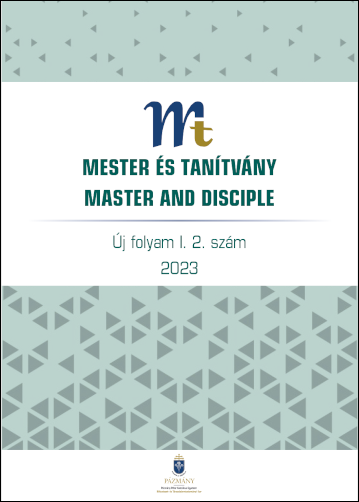A szülői aktivitás mint differenciáló tényező a tanórán kívüli, digitális munkarend időszakában (Covid–19) – intézményvezetői tapasztalatok
Megjelent 2023-12-31
Kulcsszavak
- szülői bevonódás,
- szociális státusz,
- digitális tanulás
Copyright (c) 2023 Török Balázs

This work is licensed under a Creative Commons Attribution 4.0 International License.
Absztrakt
Tanulmányunkban bemutatjuk, hogy a szülők aktivitása, kvázi-tanár szerepvállalása, együtt járva az iskola kommunikációs kapacitásainak bővítésével újszerű tanulási környezetek kialakítását tette lehetővé a digitális oktatás időszakában (Covid-19). A tanuló értékelések megbízhatóságának csökkenése és a tanár-diák interakciók átalakulása ellenére lényegében fenntarthatóvá vált a tanulási folyamat a tantermen kívüli munkarendben is. A szülői aktivitás azonban lényeges differenciáló tényezőnek bizonyult: azoknál a tanulóknál, akik a tantermi szituációkban hozzászoktak, hogy közvetlen tanári elvárások hatására tanuljanak, gyakoribbá vált a tanuláselkerülés, ha a szülők nem voltak képesek közvetíteni az iskolai elvárások érvényességét. A szülői aktivitás fontos differenciáló tényező volt az olyan alsó tagozatos tanulók esetében is, akiknél az otthoni tanulás inkább helyettesítette, mint kiegészítette az iskolait.
Hivatkozások
- Andrews, J. J.; Saklofske, D. H.; Janzen, H. L. (Eds.) (2001): Handbook of Psychoeducational Assessment: Educational Psychology. San Diego: Academic Press.
- Borgonovi, F.; Montt, G. (2012): Parental Involvement in Selected PISA Countries and Economies: OECD Publishing (OECD Education Working Papers, 73).
- Bradley, S.; Green, C. (Eds.) (2020): Economics of education. A comprehensive overview. Second edition. Amsterdam: Academic Press.
- Chua, A. (2011): Battle hymn of the tiger mother. London, New York: Bloomsbury.
- Desforges, C.; Abouchaar, A. (2003): The impact of parental involvement, parental support and family education on pupil achievement and adjustment. A review of literature / Charles Desforges with Alberto Abouchaar. Nottingham: Department for Education and Skills (Research brief, no. 433).
- Dworkin, A. G.; Ballantine, J.; Antikainen, A.; Barbosa, L. M.; Konstantinovskiy, D.; Saha, L. J. et al. (2013): The sociology of education. In Sociopedia, checked on 2017. 03. 04.
- Goffman, E. (1967): Interaction ritual. Essays in face-to-face behavior. Chicago: Aldine Pub. Co.
- Hanushek, E. A.; Woessmann, L. (2020): THE ECONOMIC IMPACTS OF LEARNING LOSSES. JT03465025; EDU/WKP(2020)13. In OECD Education Working Paper (225), checked on 2021. 01. 17.
- LaRocque, M.; Kleiman, I.; Darling, S. M. (2011): Parental Involvement: The Missing Link in School Achievement. In Preventing School Failure: Alternative Education for Children and Youth 55 (3), pp. 115–122. https://doi.org/10.1080/10459880903472876
- Luhmann, N. (2006): Bevezetés a rendszerelméletbe. Budapest: Gondolat.
- Luhmann, N. (2009): Szociális rendszerek: egy általános elmélet alapvonalai. Társadalomelmélet - kommunikációtudomány. Budapest: Gondolat Kiadó: AKTI.
- Luhmann, N. (2012): Strukturauflösung durch Interaktion: ein analytischer Bezugsrahmen / Structural breakup by interaction. An analytical frame of reference. In Soziale Systeme: Zeitschrift für soziologische Theorie (17, H. 1), pp. 3–30.
- Mead, G. H.; MORRIS, C. W. (1934): Mind, self & society from the standpoint of a social behaviorist. Chicago, Ill.: University of Chicago Press.
- Roth, S.; Schütz, A. (2015): Ten Systems: Toward a Canon of Function Systems. In Cybernetics and Human Knowing. 22 (4), checked on 2019. 12. 20.
- Simmel, G.; Blasi, A. J.; Jacobs, A. K.; Kanjirathinkal, M. J. (2009): Sociology. Inquiries into the construction of social forms. Leiden, Boston: Brill.
- Vanderstraeten, R. (2010): The School Class as an Interaction Order. In British Journal of Sociology of Education 22 (2), pp. 267–277. https://doi.org/10.1080/01425690120054876
- Vanderstraeten, R.; Biesta, G. (2006): How is education possible? Pragmatism, communication and the social organisation of education. In British Journal of Educational Studies 54 (2), pp. 160–174. https://doi.org/10.1111/j.1467-8527.2006.00338.x

